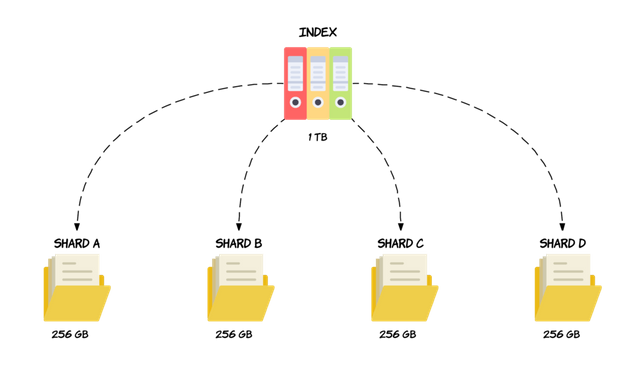Blockchain's leap Forward: Adaptive State Sharding

During last year ICO rush, a number of teams targeted the blockchain trilemma, a term coined by Vitalik Buterin. The trilemma encompasses a blockchain’s ability to fulfill only 2 of the 3 necessary factors for proper adoption: decentralization, security, and scalability.
Existing blockchains that adopt a limited access proof-of-stake system manage to boost scalability and possibly security, but fail to achieve proper decentralization. On the other hand, networks that pursue complete decentralization and optimal security succumb to throughput bottlenecks due to limited scalability. A few networks have attempted to pursue a decentralized network with rapid block processing, but this has come at the expense of security.
For the trilemma to be tackled, a novel consensus protocol must be created. Harmony, a new blockchain startup, aims to deliver consensus algorithms that create a network that cores around adaptive state sharding.
Tackling the Blockchain Trilemma
At present, the major blockchains are largely focused on decentralization and security at the expense of scalability.

The problem is that blockchain technology can and should be used for more than just a decentralized money. Smart contracts and distributed networks have the ability to be the infrastructure for the smart cities of tomorrow, but this cannot be achieved on networks that face throughput congestion if a single dApp gets too popular.
The common solution proposed to network congestion, ergo scalability issues, is the proposal of sharding. Networks that have applied sharding have managed to surpass the transactional limits of the leading smart contract platform (Ethereum), but still lack the transactional capacity for handling major enterprise utilities, let alone the infrastructural demand of a single smart city.
The cause of this is that present use of sharding is limited to transaction sharding, but a blockchain involves more than transaction confirmations. Thus, it’s imperative to achieve state sharding for a network to truly achieve scalability, and that’s exactly what Harmony does.

Transaction Sharding: The propagation of network transactions such that groups of network nodes—shards—confirm transactions parallel to each other.
State Sharding: The propagation of network data and storage cross shards.
A blockchain is comprised of transaction validation as-well-as storage and inter-node messaging. Thus, by combining transaction and state sharding, Harmony is able to properly distribute all forms of network burdens across participating groups of nodes (shards). The result is that all potential bottlenecks are thwarted.

A simple visualization of what propagation would look like.
Boosting Decentralization
The benefit of state sharding isn’t just greater scalability, but also greater decentralization. At present, the Ethereum network is nearly 2.4 Terabytes. Not only does this force node synchronization to take days, but it also mandates a high computational capacity to interact with the network as a direct node. The result is that most people engage with the Ethereum network with gateway nodes; consequently, the network’s decentralized state exists only in theory.

Through the use of state sharding, however, Harmony delivers the technological solution needed to enable the masses to become active nodes on a network. By propagating storage and communication requirements of nodes, even typical household computers can have the resource capacity to become active nodes; this is a necessity for true decentralization to be achieved.
Such ease of becoming an active network node delivers a key benefit: adaptability.
Adaptive Sharding
The smart cities of tomorrow can certainly exist without the presence of blockchain technology. The present web infrastructure is backboned on centralized cloud providers.
These networks have the data and computation power needed to power virtually infinite demand. However, their centralized state has proven to be a risk time and time again. A single attack on a centralized network debilitates all entities that rely on it; such a vulnerable state of computational resource sourcing cannot be leveraged in a smart economy.
This is where blockchain technology trumps centralized infrastructures as the decentralized state of the network becomes invulnerable to attacks. However, for a blockchain network to effectively compete against the incumbent centralized networks, it’s imperative that the technology can be adaptive.
Most modern cloud services and the SaaS that are built on it to power mass consumption applications and platforms are adaptive. The networks adjust to demand and relay the amount of resources needed to support the instantaneous network demand. While existing smart contract networks lack this capability, Harmony’s delivering an adaptable network due to its use of state sharding. Because of the network’s low entry barrier for active nodes, as throughput demands increase, more shards can be activated to provide the necessary resource supply. Subsequently, the network is able to achieve adaptability parallel to network demand.
The Infrastructure of Tomorrow?
The smart economy many of us envision is comprised of autonomous machines, powered by cutting-edge machine learning, managing virtually all day-to-day operations of enterprises, transportation, agriculture, and possibly even government.

An autonomous machine-driven economy may no longer be a distant reality.
Such a system will heavily rely on an integration of IoT and AI with a rapid and high demand for network messaging and transactional throughput. The securing of the network upon which all these autonomous machine interact will be of paramount importance and thus the need of a decentralized infrastructure is mandated for a machine-run smart economy.
While we are still bounds away from truly living in a smart city, all the technologies needed to deliver this reality are fast-improving. Higher quality data sources are improving ML algorithms at rapid pace, greater corporate focus on IoT is improving the spread of IoT sensors across virtually every industry, and now, Harmony is pursuing the decentralized network upon which the IoT-integrated and ML-powered autonomous entities can operate.


Essential Links:
Website: https://harmony.one/
Whitepaper: https://harmony.one/whitepaper
Social Media: https://twitter.com/harmonyprotocol | https://www.instagram.com/harmonyoneprotocol/
Connect with me:
Cryptocurrency News Cryptocurrency Airdrops Best ICO List Ripple XRP News Ethereum News Crypto Bounties Blockchain News Blockchain Lawyers Recover Lost or Stolen Crypto


It seems to me that Steem has solved the trilemma with Hivemind & MIRA.
Nodes can now be run on commodity hardware thus there can be full decentralisation.
Steem has proven its high transaction throughput and security over a long period.
Steem Engine and other side chains are providing second layer protocols for many other applications.
I don't really see what advantage Harmony has over Steem.
As much as I like STEEM, the platform cannot natively handle smart contracts.
Steem Engine intends to solve that, but we don't have any major live executions on it to prove its functionality. The Trilemma proposed by Vitalik was referring to smart contract networks; STEEM is not a part of that list, at least not yet.
In fact, even the betting applications built on STEEM don't utilize smart contracts to deliver trustless interactions. Betting applications are the lowest hanging fruit for pretty much every smart contract network.
Прекрасно!
Thanks!
I really need to pick up my dictionary to check the meaning of trilemma
It's a situation where you have to make a tough decision among three choices.
I like it, your subject of understanding
I liked it a lot, you treated this topic
Glad to hear so.
@hatu, One thing is absolutely valid and that is Blockchain Space should not limit to money and should be adopted in more fields and that means, more Transperancy on vast scale.
Keep up the awesome work and have a blessed time ahead.
Transparency is one of the fundamental attributes, hence it delivers decentralized money.
Yes. 👍
It is good in theory but we need to see it in action or otherwise is just beautiful words.
That's true. Let's wait and see.
You just planted 0.10 tree(s)!
Thanks to @ucukertz
We have planted already
7726.14 trees
out of 1,000,000
Let's save and restore Abongphen Highland Forest
in Cameroonian village Kedjom-Keku!
Plant trees with @treeplanter and get paid for it!
My Steem Power = 21175.57
Thanks a lot!
@martin.mikes coordinator of @kedjom-keku
They've been able to do 10,000 tps on 10,000 nodes.
Do you know the implementation date of sharding into Ethereum?
A detailed explanation of the Blockchain trilemma would be great.
The challenge of delivering a blockchain that is decentralized, scalable, and secure. Most networks manage to pick 2 of the 3.
Very awesome post.
Posted using Partiko Android
Thank you.
Excelente post y muy buena info
Were finally at the adoption stage it would appear
I love your post .. your post is great .@hatu